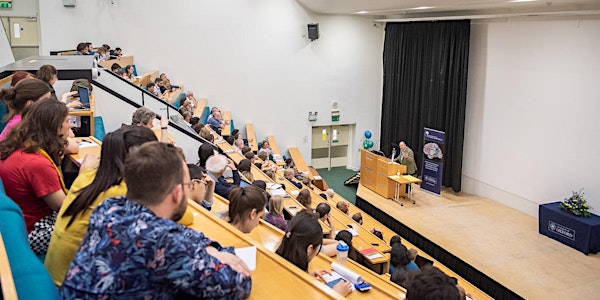
Thomas Willis Day 2020
Date and time
Location
John Radcliffe Hospital
Headley Way Headington OX3 9DU United KingdomDescription
THIS EVENT IS POSTPONED UNTIL FURTHER NOTICE
Our annual Thomas Willis Day celebrates the work of our Department over the previous year, marking our successes in research, teaching and public engagement. It incorporates the annual postgraduate poster competition and a guest lecture.
Programme
2.00-3.30pm: Postgraduate Poster Competition in Tingewick Hall
3.30-4.30pm: Tea & Cake in Tingewick Foyer
4.30-5.30pm: Lecture in L2, 'Functional Imaging of the Human Brain: A Window into the Architecture of the Mind', Nancy Kanwisher, MIT
5.30-5.45pm: Presentation of Prizes
5.45-6.30pm: Drinks Reception in Tingewick Foyer
Poster Submission
All 1st, 2nd and 3rd year DPhil students are required to submit a poster.
- Posters must be size A0, and portrait orientation where possible
- Posters can be put up from 12.00pm on the day in Tingewick Hall
- The poster session begins at 2.00pm and you will be expected to be by your poster to talk to the judges, in particular, and any interested viewers in general.
- Judging will be carried out by a panel of senior academics and members of NDCN's Administration Team. Judging will be complete by 3.30pm and the winners will be announced at 5.30pm after the lecture.
Prizes
For information about prizes and how to nominate people, see our intranet.
Lecture abstract

The last 20 years of brain imaging research has revealed the functional organization of the human brain in glorious detail, including dozens of cortical regions each of which is specifically engaged in a particular mental task, like recognizing faces, perceiving speech sounds, and understanding the meaning of a sentence. Each of these regions is present, in approximately the same location, in essentially every normal person. This initial rough sketch of the functional organization of the brain counts as real progress, giving us a kind of diagram of the major components of the human mind. But at the same time it is just the barest beginning. Really what our new map of the human brain offers is a vast landscape of new questions. In this talk I will first broadly survey some of the most widely replicated functionally distinctive cortical regions, and then describe ongoing work into three such questions.
First, in light of widespread findings that functionally specific cortical regions contain information about “nonpreferred” stimuli, do some patches of cortex really play a highly specific causal role in processing just one class of stimuli? Second, how does all this complex structure, that is so similar across subjects, arise in development? I will discuss (but not answer) a few recent findings about the developmental origins of cortical specificity, including what appears to be a fusiform face area in the ventral visual pathway of congenitally blind people. Third, I will discuss new modelling results that shed light on why we have the particular functionally specific cortical regions we do, and apparently not others, and why, from a computational point of view, functional specificity might be a good design feature for brains in the first place.
Organised by
We are at the forefront of one of the greatest challenges of the 21st century - deciphering how the brain works. Oxford Neuroscience coordinates neuroscience research across four University of Oxford campuses, including departments at the John Radcliffe and Warneford Hospitals. Our aim is to translate discoveries from the laboratory through to improving clinical practice.